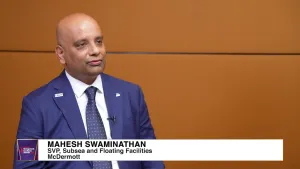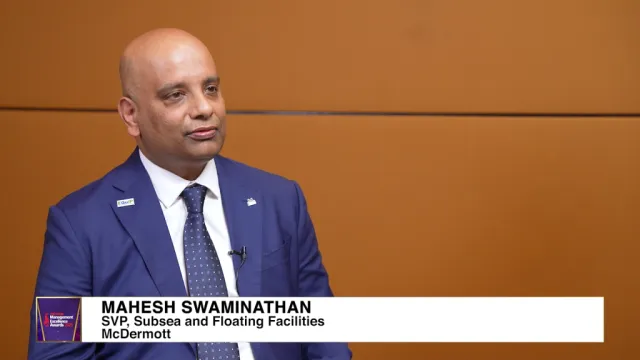
PwC’s Wilson Chow urges broadcasters to innovate responsibly amidst industry evolution
This comes as consumers increasingly expect hyper-personalised, multi-platform experiences, pushing broadcasters toward direct-to-consumer strategies.
The Asia-Pacific broadcasting industry continues its dynamic evolution, marked by significant shifts in consumer behavior, technological advancements, and market strategies. Despite global economic pressures, the sector shows strong growth potential, particularly in high-growth markets as they reconfigure business models to adapt to the rise of latest technological trends.
Offering this valuable perspective is PwC China’s Wilson Chow, who currently heads PwC’s global technology, media and telecommunications (TMT) industry practice. He holds extensive experience in providing assurance and advisory services to companies in the TMT industry, ranging from start-ups to global tech giants, for capital market transactions, assurance engagements, systems and controls advisory, and deals.
Being one of the esteemed judges for the 2025 Asia-Pacific Broadcasting+ Awards, Chow shares how the industry can respond to demands for a more seamless and personalised broadcasting experience, and how they can usher in a new era of participatory content whilst also balancing creative experimentation with social responsibility.
How is the rapid evolution of technology, media, and telecommunications shaping the competitive landscape for broadcasters in the Asia-Pacific region?
Despite economic headwinds, technological disruption and increased geographic and industry competition, the global entertainment & media (E&M) industry has continued to grow. According to the PwC’s Global E&M Outlook 2024-28, published in July 2024, which covers 11 revenue segments across 53 countries and territories, finds that global E&M revenues are projected to reach US$3.4t in 2028, growing at a 3.9% compound annual growth rate (CAGR).
Most notably, advertising revenue is set to hit US$1t in 2026, and is projected to account for more than half (55%) of total E&M industry revenue growth over the next five years. The Outlook also finds that streaming services, traditionally dependent on subscription models, face increased competition and challenges in consumer use and uptake, and are already looking at consolidation. Further, live sports, including mega-events like the Summer Olympics, a crack down on password sharing, and ad-based models are also expected to drive growth.
Looking across the globe, the US remains the world’s largest market for consumer spending and advertising at 4.3% CAGR to 2028, representing more than one-third of global spending in 2023. However, other large markets including China (7.1%) and India (8.3%), as well as budding markets, such as Indonesia (8.5%) and Nigeria (10.1%), are growing more quickly.
According to our findings, the Asia-Pacific broadcasting sector is facing notable disruption and competition, but also displays promising signs of strong growth potential. These span the proliferation of streaming platforms, 5G networks, and cloud-based production tools, as well as the broad adoption of Generative AI (GenAI) technology. Each development will enable regional players to undergo business model reinvention and transformation to reconfigure more honed models of content delivery and audience engagement. Consequently, such firms will be better equipped to adjust to the changing consumer behaviours and preferences in the region. Consumers now demand seamless, multi-platform experiences, pushing media companies and broadcasters to invest in direct-to consumer strategies and hyper-personalised content.
As artificial intelligence continues to evolve, how do you see its role in content creation, audience engagement, and operational efficiency within the broadcasting sector?
The beauty of GenAI is that people can adopt AI technology to generate defined outputs and create unique and original content, simply using natural language prompts. Adoption of AI will significantly unleash imagination and creativity of content producers, whilst also making their entire production and distribution process more efficient.
Having exploded onto the scene in the past couple of years, GenAI brings major opportunities and challenges for companies across the entertainment and media sectors. The 2024 PwC Global CEO Survey points toward GenAI boosting profits this year, with 61% of US CEOs expecting it to improve the quality of their products and services.
Recently, the focus of GenAI deployment in the entertainment and media sector has focussed on reducing and controlling costs, rather than driving new revenue streams. GenAI-driven text generation tools can translate concepts into stories and generate credible human dialogue, turn text into visuals and storyboards, and create animated 3D models from 2D videos or static images. GenAI can also add value in post-production by making editing quicker and easier. In Japan, anime and comic producers are using AI to streamline and accelerate their production processes. In Indonesia, GenAI is being deployed as a productivity engine for creative processes. The open question remains, precisely how GenAI will translate into higher revenues and help companies accelerate their pursuit of revenue pools? One high-potential area lies in the highest-growth sector: advertising. GenAI is increasingly being integrated into content creation and advertising tools. Here its application has tended to focus initially on extracting small pieces of information and generating summaries in sub-sectors such as sports media.
To date, many of the applications of GenAI have focussed on speed, efficiency and reducing costs. As we look ahead, in a dynamic that the forecast doesn’t quite capture yet, industry participants will have to examine how this powerful technology can lead to greater value creation. GenAI offers users a powerful flywheel for experimenting, iterating, and scaling new solutions and processes. In advertising, GenAI can be used to quickly develop creative approaches for different contexts, and then to iterate and refine rapidly in response to consumer attention and uptake. If GenAI can be harnessed to offer new experiences, and create new revenue streams, the growth potential will be even greater.
For audience engagement, machine learning powers recommendation engines that curate personalised viewing experiences, increasing retention and advertising revenue. Behind the scenes, AI-driven analytics optimise everything from ad placements to predictive maintenance of broadcast infrastructure. However, the broadcasters have to consider the ethical challenges, such as deepfake misuse and algorithmic bias, which must be carefully managed to preserve trust. The broadcasters who will thrive are those that deploy AI not as a replacement for human creativity, but as an “enhancer,” enabling richer storytelling whilst maintaining editorial integrity.
In your view, how can companies drive social change and positive impact through their content and platform usage?
Media companies wield substantial influence in shaping public discourse, making their role in driving social change both a responsibility and an opportunity. By embedding inclusive narratives, whether through diverse casting, climate conscious storytelling, or mental health awareness, broadcasters can challenge stereotypes and foster empathy. Platforms can amplify responsible grassroots movements by dedicating airtime to social causes or partnering with government agencies and NGOs for educational campaigns. By using interactive features in online platforms, such as live polls or community-driven content, broadcasters can further engage audiences in meaningful dialogues. Beyond programming, sustainable production practices and ethical data usage can also reinforce corporate credibility. The most impactful players will be those that align profit with purpose, ensuring their content not only entertains but also educates and inspires ethical actions and social awareness.
In the face of global competition, how can broadcasting companies position themselves as leaders in innovation whilst addressing local market needs?
“Global” competition poses a threat, whilst also opening opportunities. Broadcasters should leverage global innovations and tailor them to align with regional tastes and cultural nuances. Investing in cutting-edge tech like AI, AR, and cloud solutions ensures competitiveness. For optimal engagement, these should be adapted to local user behaviours and consumption habits, such as mobile-first viewing in emerging markets. Collaborating with homegrown creators and regional platforms can yield authentic content that resonates with viewers or subscribers. Additionally, forming strategic partnerships with telecom providers and local regulators helps navigate infrastructure and policy challenges. By combining scalable technology with local domestic insights, a broadcaster can carve out a unique position as a successful player in their home market.
Looking ahead, how do you envision the broadcasting industry evolving in the next few years, and what major changes should companies prepare for to stay ahead?
The industry will likely see a continuous convergence and blurring of lines amongst traditional broadcasting, social media, and e-commerce, with interactive and shoppable content becoming mainstream. Immersive technologies like VR and metaverse integrations could redefine "viewing" into becoming a participatory experience. Concurrently, sustainability pressures will mount in progressive markets, pushing companies to adopt greener production methods and transparent ESG reporting. Regulatory scrutiny around data privacy, misinformation, and antitrust will also shape strategies, requiring robust governance frameworks. To stay ahead, broadcasters must foster a culture of experimentation, invest in upskilling talent for digital-first workflows, and build agile infrastructure that adapts to both technological shifts and societal expectations.
As a returning judge at the Asia-Pacific Broadcasting+ Awards, what will you be looking for in this year’s nominees?
It is an honour to be invited back as a judge this year and have the opportunity to review the innovative and creative business solutions proposed by each nominee. I will be prioritising entries that demonstrate optimisation of consumer experience and appreciation of the evolution of user behaviours, in particular, use cases which embrace the power of emerging technology such as AI-enhanced offerings or cross-platform interactivity. Additionally, I will give credit to nominees who bridge entertainment with education and social responsibility. Ethical considerations, from diversity in content to sustainable production practices, will also weigh heavily in all evaluations. Ultimately, the winners will be those pushing the industry forward, not just technically, but creatively and responsibly, acting as good role models for others to follow.



















 Advertise
Advertise









